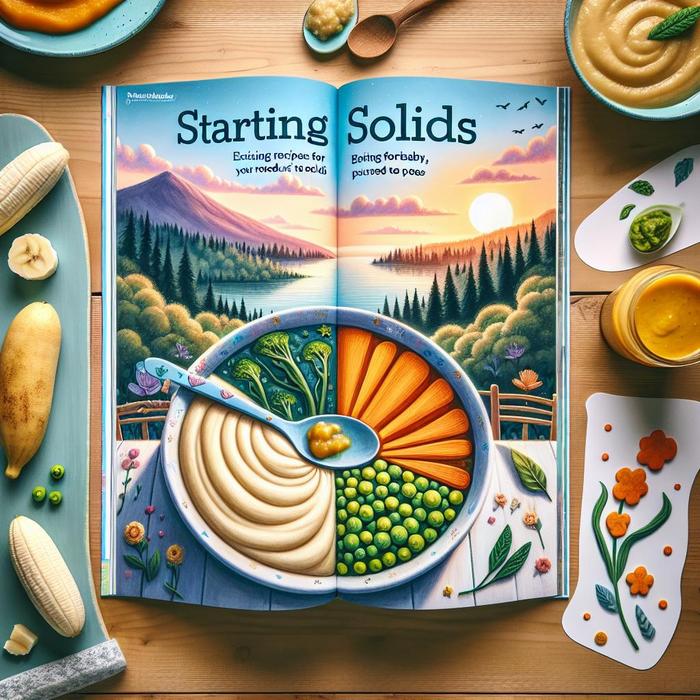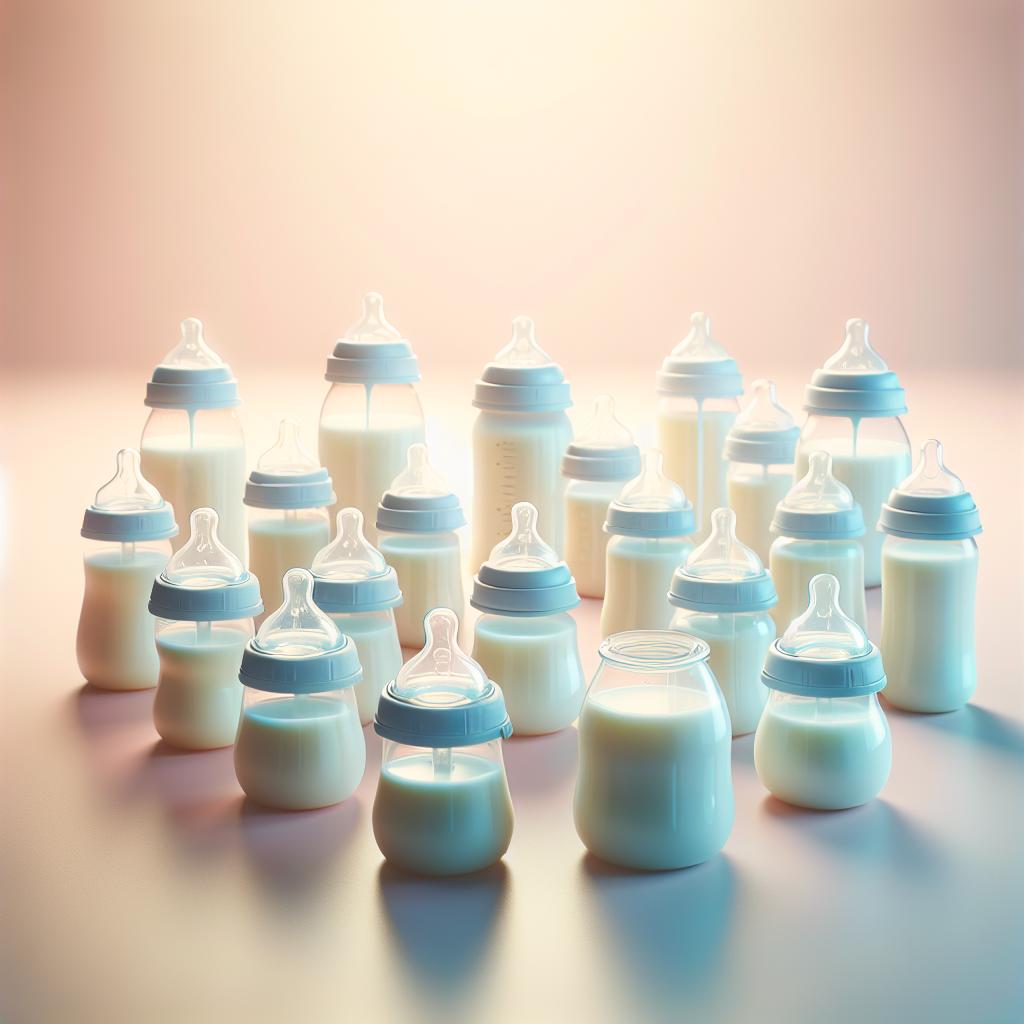Embracing The Excitement: Your Baby’s First Foods
Introducing solids to your baby is indeed an exciting milestone in your parenthood journey. The giggles, the curiosity, the cute little faces your baby makes – everything adds up an extra sprinkle of delight to this process. And, it’s not just about the fun element. Starting solids is a major leap towards a healthy growth and development phase for your baby. This stage prepares their little tummies to handle a diverse range of food items and nurtures their eating habits.
However, it’s natural to feel a bit overwhelmed when it comes to preparing the baby first foods. Don’t worry! We’ve got your back with some fantastic recipes and tips that will turn your kitchen into a magical funhouse of delicious, nutritional baby recipes.
Finding the Right Time to Start Solids
As parents, it’s crucial to ensure that your baby is ready to embark on this solids journey. Most babies are ready for solids between four to six months. However, it’s recommended to consult with your pediatrician or study trusted resources, such as the CDC and NHS guidelines, before starting solids. Being patient and gentle with the process will make it a pleasant experience for you and your baby.
Delicious and Nutritious: Baby First Food Recipes
With an array of ingredients and countless baby recipes, deciding what to cook can seem challenging. Here are some simple, tasty, and healthy first food recipes for your little one:
- Smooth Banana Puree: Rich in fiber and potassium, bananas make for an excellent first food. Mash ripe bananas till the texture is smooth. You can add a little breastmilk or formula to get the desired consistency.
- Sweet Potato Mash: Packed with Vitamin A, sweet potatoes are super healthy. Boil them till they are soft, and mash them up. Sweet and creamy, your baby will love it!
- Apple and Pear Puree: These fruits are high in fiber and Vitamin C. Simply steam and blend them to a smooth puree.
Remember to introduce one food at a time and wait for a few days to check for any allergic reactions. Once your baby gets familiar with these foods, you may start mixing them for a change of taste.
Catering to Your Baby’s Nutritional Needs
It’s not just about satiating those little tummies. The right food will fuel your baby’s growth and development. According to the Mayo Clinic, infants need a balanced mix of proteins, carbohydrates, and fats.
Also, introducing your baby to various food textures plays a significant role in oral and motor development. Our previous articles discuss the importance of sensory exposure during these formative years. Nutrition and sensory development go hand in hand when it comes to your baby’s first encounters with solids.
These initial steps towards starting solids will undoubtedly create memorable moments filled with joy and excitement. Embrace these beautiful moments, and enjoy the journey together with your little one. After all, this stage will lay the foundation of healthier eating habits and contribute to their growth and wellbeing.
A Smooth Transition from Milk to Solids
The transition from milk to solids is undoubtedly a huge one. That’s why it’s essential to start with easily digestible foods with smooth textures. As babies can only manage small amounts of solid food, their milk feed(s) should continue to be the primary nutrition source. It’s also crucial not to rush the process and give your little ones time to get used to this new experience of consuming solids.
Ultimately, the idea is to make your baby comfortable with different types and consistency of foods gradually. With time, you can incorporate a variety of homemade baby food recipes into their diet and move on to lumpier foods and finger foods gradually.
Keeping a Watchful Eye
While the act of introducing solids is exciting, one needs to be vigilant about any potential signs of food allergies. Food allergies can reveal themselves in the form of skin rashes, respiratory issues, vomiting, or diarrhea.
In case you notice any unusual reactions post feeding, it’s important to consult your pediatrician promptly. Also, it’s advisable to introduce new food to your baby in the daytime so that you can keep a close watch for any potential adverse reactions.
Exploring Beyond the Initial Foods
Once your baby gets comfortable with the standard purees and mashed food, it’s time to explore new flavors. Providing your baby with a variety of foods not just offers nutritional benefits but also helps with the development of their flavor palate. Making baby food at home is beneficial, as it allows you to control the ingredients, ensuring the food’s freshness and nutritional quality. Websites like The Every Mom offer many easy to make solid food recipes.
Consider well-cooked vegetables, stewed or poached fruits, blended lean meats. These foods not only offer a variety of textures but also bring in a broader nutrition profile. Remember, whatever be the food, start with a smooth puree or well-mashed consistency to ensure easy swallowing.
Getting the Balance Right
Balancing the proportions of macronutrients in your baby’s diet is important. According to Pampers, infants need enough proteins for muscle development, carbohydrates for energy, and fats for brain development. Foods such as avocados, lentils, and lean meats are great to incorporate from early on. However, always keep the consistency right and appropriate for your little one’s development stage.
Don’t forget to also include iron-rich foods into your baby’s meals. This could include pureed meats and iron-fortified cereals, especially if your baby is primarily breastfed. Proper iron intake is crucial to support your baby’s rapid growth and development.
Dos and Don’ts of Serving Baby’s First Foods
While embarking on this exciting journey, always remember these pointers:
- Do introduce one food at a time to watch out for any potential allergic reactions.
- Don’t rush the process. Allow your baby to explore, understand, and enjoy the food.
- Do include a variety of foods to provide a balanced diet.
- Don’t force your baby to eat. Gently encourage them and make the mealtimes fun and engaging.
Embracing these moments of introducing your baby’s first foods can be thrilling. With careful planning and a little creativity, you can make this a fun, enjoyable, and healthy journey for not just your baby but also yourself.
As always, keep those tiny smiles and chubby cheeks in mind when planning their meals. Every spoonful counts towards shaping their future health, so let’s make it count!






